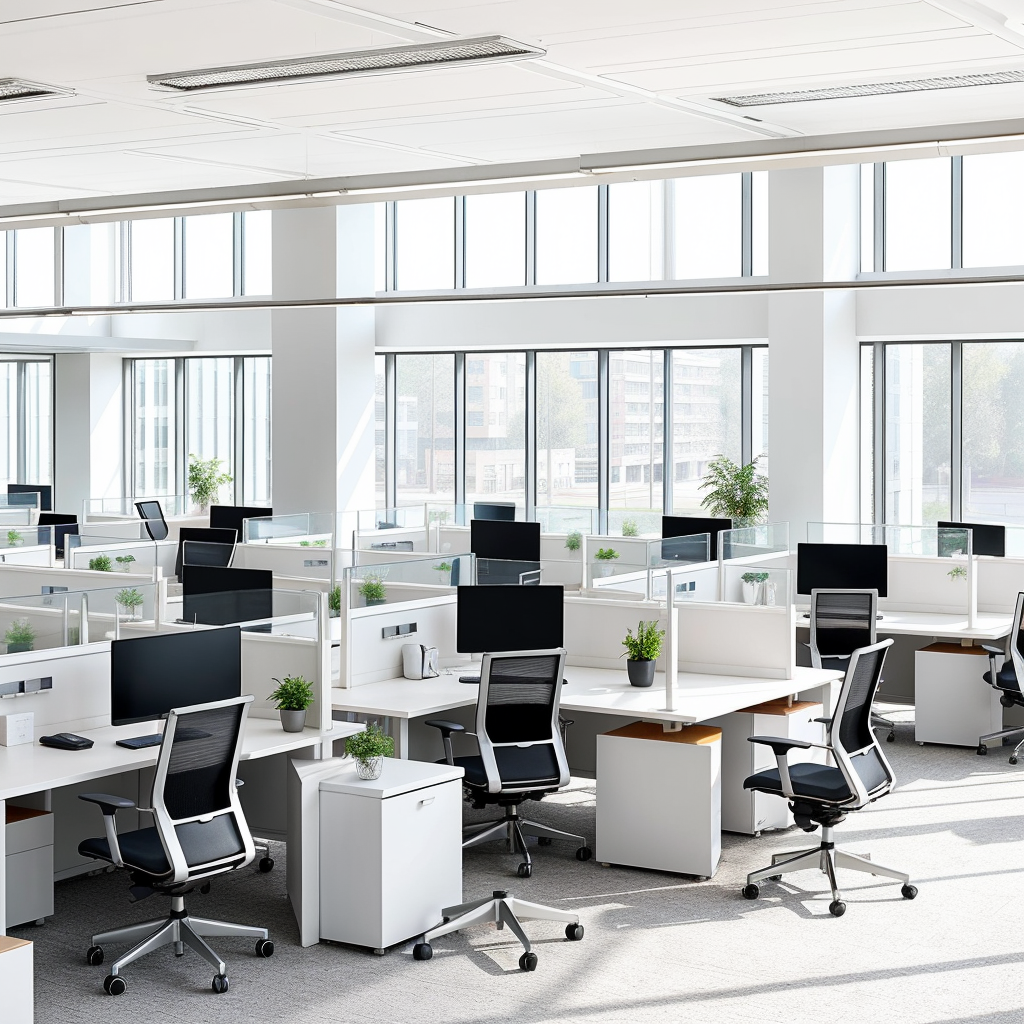
Is your office buzzing with activity yet struggling to meet deadlines and targets? The modern office environment is evolving, but productivity remains a constant challenge for many businesses. What if a few strategic changes could transform your workspace into a productivity powerhouse?
This blog post explores five impactful ways to enhance productivity in your office. Whether you’re an office manager, small business owner, or team lead, these tips will help you create an environment where efficiency and morale thrive.
Importance of a Productive Office Environment
A productive office isn’t just about getting more work done; it directly impacts employee satisfaction, efficiency, and overall performance. A well-organized, comfortable workspace can make the difference between a team that’s barely scraping by and one that’s exceeding expectations. Investing in productivity-enhancing strategies can lead to improved job satisfaction, reduced absenteeism, and a healthier bottom line.
Method 1: Invest in Ergonomic and Good Quality Office Furniture
Explanation
Ergonomic office furniture is designed to support the body’s natural posture, reducing discomfort and physical strain. Adjustable chairs, desks, and proper monitor stands can transform how your team experiences their workday. Ergonomic designs promote better posture, minimizing the risk of repetitive strain injuries and enhancing focus.
Benefits
Good quality office furniture isn’t just about aesthetics. Ergonomic chairs, for example, provide lumbar support and can be adjusted to suit individual needs, reducing back pain and fatigue. Height-adjustable desks allow employees to alternate between sitting and standing, promoting better circulation and energy levels. Proper monitor placement reduces eye strain and neck discomfort, which can boost productivity.
Tip
Conduct ergonomic assessments to identify specific needs within your team. Consider offering a range of adjustable options to cater to different body types and preferences. Testing furniture before purchasing can also ensure it meets your team’s requirements.
Method 2: Optimize Office Layout and Space Utilization
Explanation
An efficient office layout can streamline workflow and minimize distractions. A thoughtfully designed workspace considers the nature of tasks and the need for collaboration and quiet work.
Benefits
Creating dedicated spaces for various activities can significantly improve productivity. Collaboration areas foster teamwork and innovation, while quiet zones allow for deep, focused work. Breakout areas provide a place for relaxation and informal meetings, enhancing overall morale.
Tip
Involve employees in the planning process to ensure the layout meets their needs and preferences. Flexibility is key; modular furniture and movable partitions can adapt to evolving requirements.
Method 3: Implement Technology and Automation Tools
Explanation
Technology plays a crucial role in automating repetitive tasks, improving communication, and enhancing overall efficiency. The right tools can save time, reduce errors, and streamline processes.
Benefits
Project management software like Trello or Asana helps teams stay organized and on track. Communication platforms such as Slack or Microsoft Teams facilitate real-time collaboration. Automating routine processes, like invoicing or data entry, allows employees to focus on higher-value tasks.
Tip
Regularly train employees to ensure they’re maximizing the potential of available technology. Stay updated on the latest tools and trends to keep your office ahead of the curve.
Method 4: Foster a Positive and Collaborative Work Culture
Explanation
A positive work environment significantly impacts employee motivation and productivity. Open communication, recognition of achievements, and encouraging teamwork are essential components.
Benefits
A supportive atmosphere boosts morale and fosters a sense of belonging. Regular team-building activities and feedback sessions can enhance collaboration and innovation. Recognizing individual and team achievements motivates employees to strive for excellence.
Tip
Create channels for employees to share ideas and concerns. Encourage a culture of continuous improvement where feedback is valued and acted upon.
Method 5: Encourage Breaks and Promote Work-Life Balance
Explanation
Regular breaks and a healthy work-life balance are critical for sustained productivity and preventing burnout. Short breaks during the day can recharge focus, while flexible working options reduce stress.
Benefits
Encouraging employees to take regular breaks can improve concentration and creativity. Providing break areas with comfortable seating promotes relaxation and social interaction. Flexible working arrangements, such as remote work or flexible hours, enhance job satisfaction and reduce turnover.
Tip
Set up wellness programs and encourage the use of vacation time. Lead by example to show that taking breaks and maintaining a work-life balance is valued.
Conclusion
Creating a productive office environment involves a combination of ergonomic furniture, optimized layout, technology integration, positive culture, and work-life balance. By implementing these strategies, you can transform your office into a hub of efficiency and innovation.
Evaluate your current office setup and consider making these changes to boost productivity. Remember, a well-designed workspace supports both employee well-being and business success. Ready to take the next step? Start with one change today and witness the positive impact on your team’s productivity and morale.
Leave a Reply